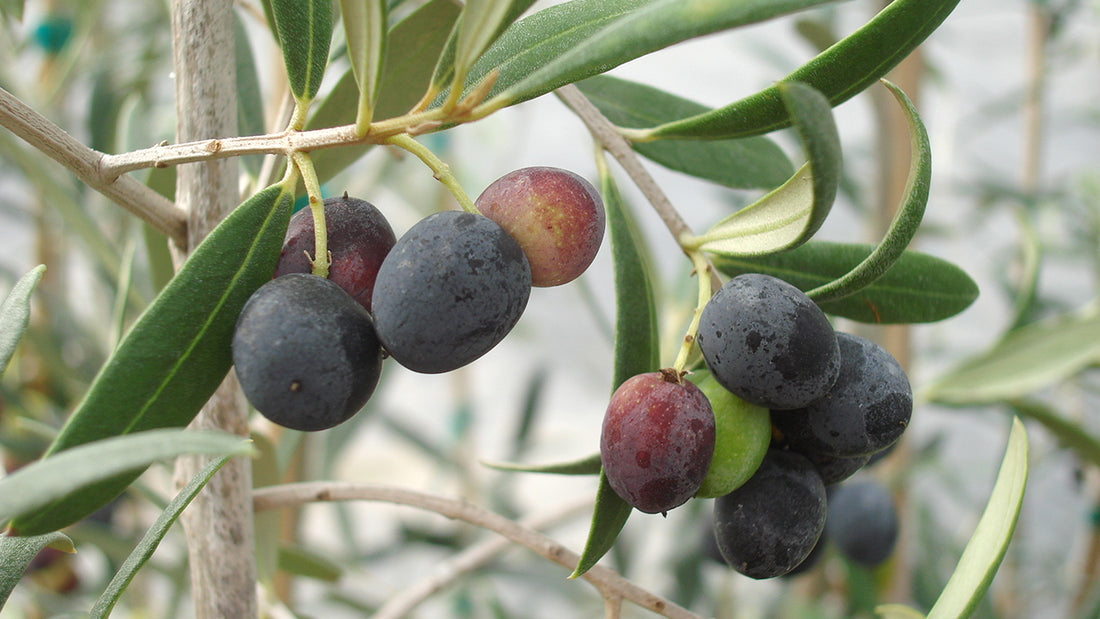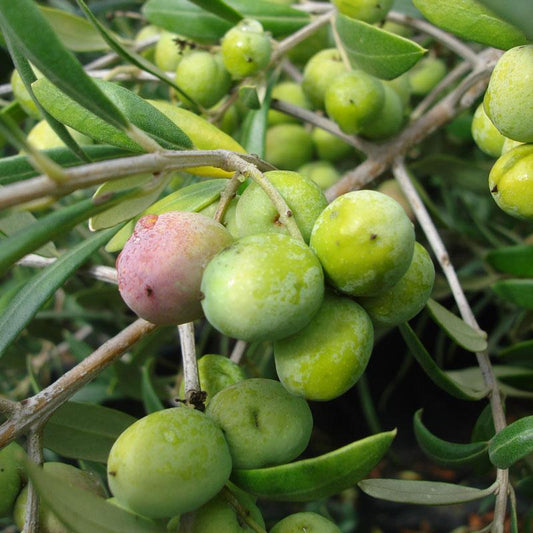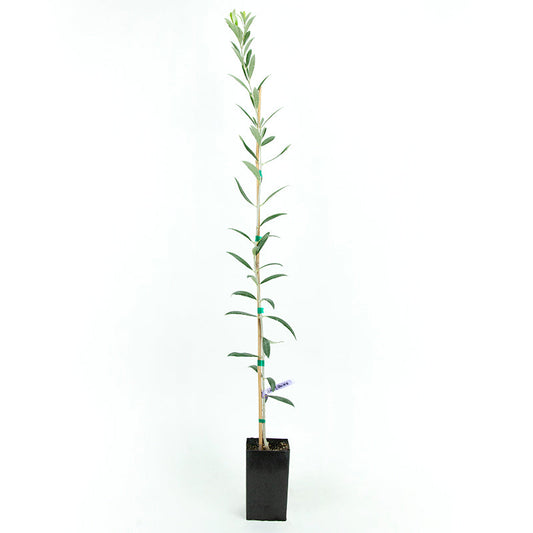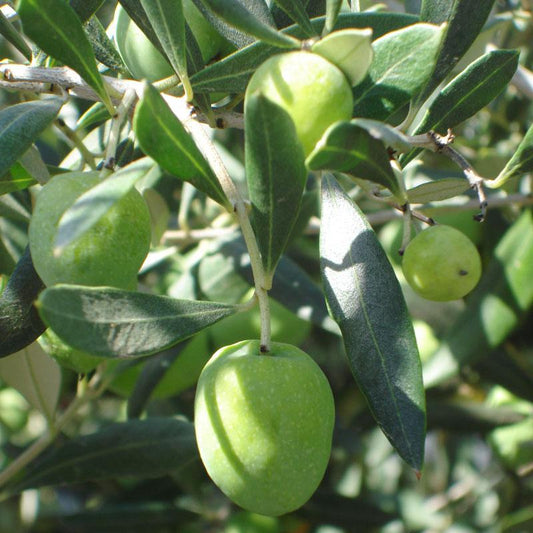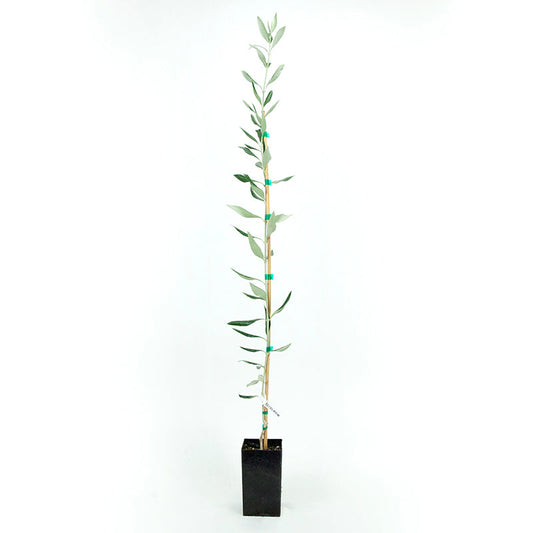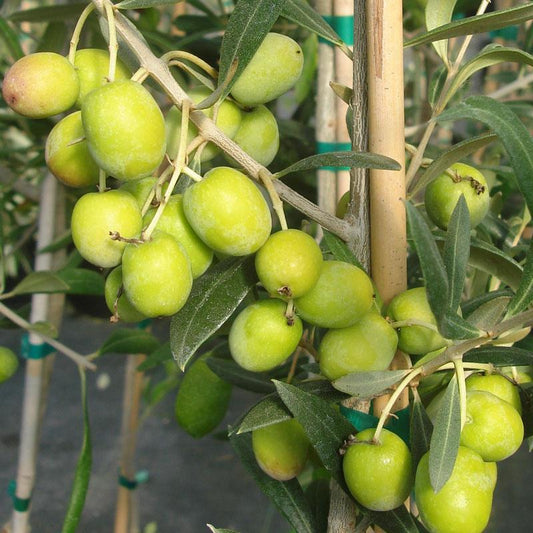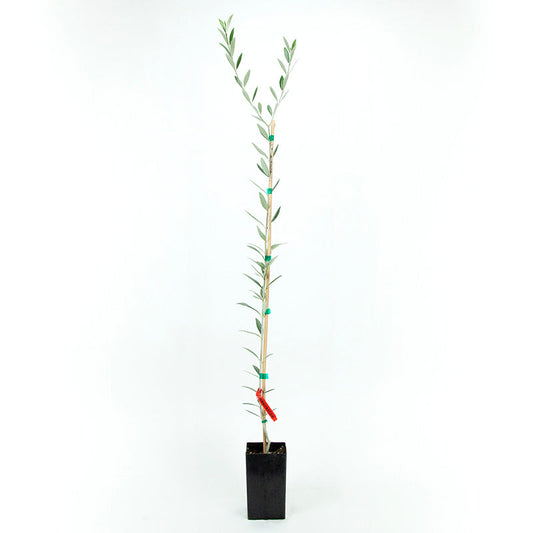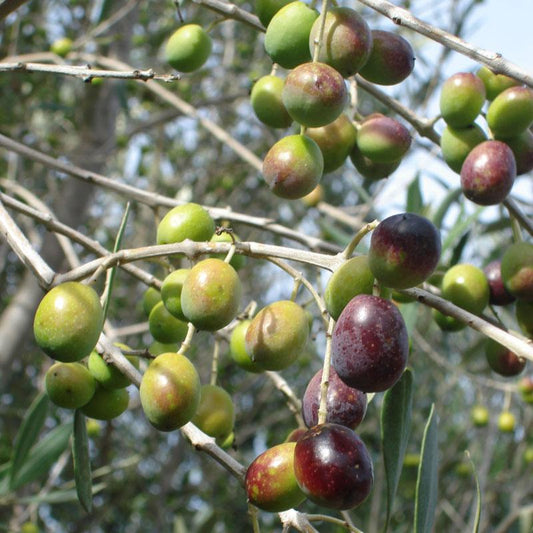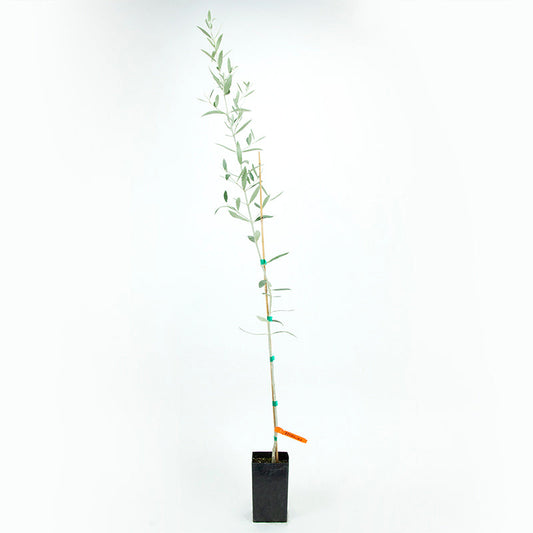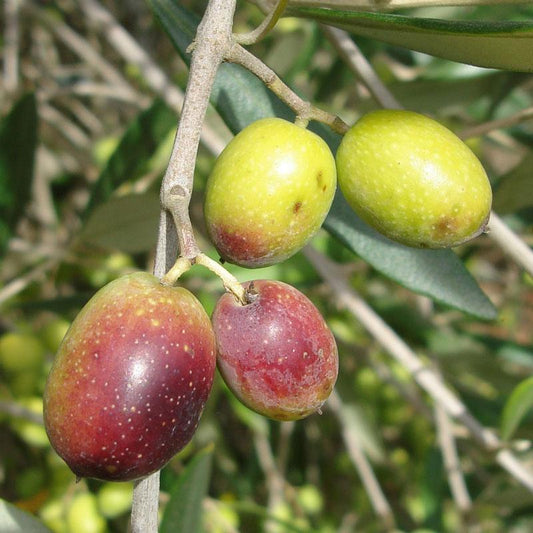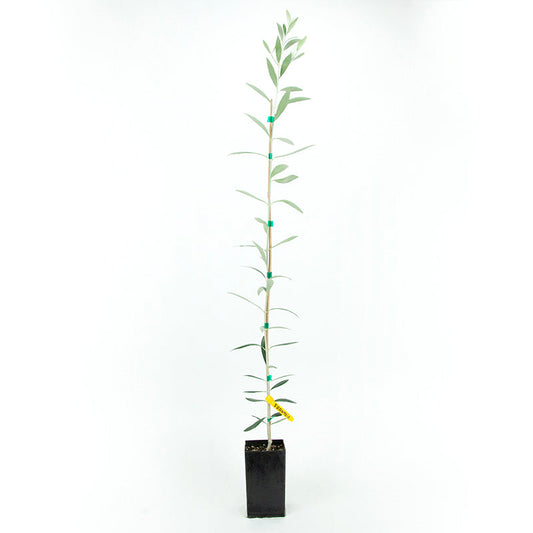Olive trees are self-fruitful, except where noted, but sometimes crops do not occur due to climate or biennial bearing habits. Even if a pollenizer is not required, it will help increase yields. These fruit trees unlike deciduous trees are evergreen, long-lived (500+ years), beautiful as an ornamental tree, and have a soft gray-green foliage. They are slow growing to about 25–30.’ Drought resistant, grow in shallow, alkaline soils with little fertilization. Avoid over-watering and provide good drainage. Thrive in hot, full sun, dry summers but adequate in coastal regions. Minimum winter temperatures shouldn’t drop below 22–25°F (green fruit will be damaged at 32°F), but average winter temperatures above 50°F will inhibit fruiting.
Planting & Growing

Olive trees are a lifetime investment and caring for them properly, right from the start, will ensure years of enjoyment and productivity. The greater the investment in early care, the less maintenance that will be required as the tree matures.
When to Plant: Early fall is the best time to plant an olive tree, but early spring is also acceptable as long as frost-free conditions are predicted. A good spacing to follow is 18’ x 14’ if planting in an orchard. This allows enough space for air and light to penetrate providing for an optimal growing season. If dry-farming your trees, choose a bigger tree spacing of 24’ x 24’ and plant in early Fall to take advantage of natural rains.
Watering: Too much water is the olive tree’s worst enemy. If your soils are too heavy and/or tend to hold excessive water during extended rainy periods, you will have to improve the drainage or even change the site of your grove to allow for extra drainage. Do not plant olives in areas that collect water, seep water after rain or hold soil moisture to the point of becoming boggy, a detrimental soil texture. Some soils won’t drain sufficiently no matter what you do. A well drained soil is important for olive trees.
Although olive trees are drought resistant, they will need irrigation when young in order to establish themselves. Olive trees that are irrigated when young will ofter fruit earlier. A rough estimate of water needs for a new tree for the first year is 2½ gallons once a week. When mature, if drought is continued, the tree may survive but at the expense of the crop. Consider supplemental irrigation in times of severe drought.
Soil: To prepare the soil amend a 9’ x 9’ area with 2½ to 3 cubic feet of composted manure. Dig in the amendments with a digging fork or broadfork. Soil Samples may help determine if the ground has acidity or alkalinity. Olive trees in clay soil tend to develop robust root systems, adapting to the soil's structure for optimal nutrient absorption and stability. Dig a hole the same size roughly as the container. Place the tree in the hole at the same depth as it was in the pot. Do not disturb the roots. Add the fill soil back in and water thoroughly.
Ongoing Care
Weed management for young olive trees is critical. Do not allow weeds to grow within three feet of the tree for the first three or four years of the tree’s life. Mulch is recommended. Use a loose straw mulch and make sure it is kept 4–6” away from the trunk. If you live in a wet climate the mulch will retain too much moisture and other weed control strategies should be used.
Fruit Production
As olive trees mature, typically reaching full fruit-bearing potential between 5 to 8 years, they embark on a journey of prolific fruit production. The tree's initial years involve establishing a strong root system and developing its structure. Once matured, olive trees showcase their resilience by yielding abundant fruits. The fruiting season, influenced by factors such as climate and olive variety, becomes a testament to the tree's capacity to produce olives, eventually leading to the creation of the cherished olive oil.
Fertility
Olive trees require little fertilization and can be grown in just about any type of soil as long as it is not water-logged. Usually, compost is sufficient for well-balanced soils and plant growth. It should be applied in late winter or early spring, on the surface in a broad ring around the plant. A pH of 6-7 is ideal, though olives tolerate 5.5 to 8.5 pH. Add lime (if pH is too low or “acidic”) or soil sulfur (if pH is too high or “basic”). Periodic soil testing will show whether pH and nutrient needs are being met.
Pruning & Harvesting

Prune very minimally the first four years, limiting pruning to tasks like removing suckers. Once a basic tree shape is developed either as a multi trunk with 3–5 main leaders originating close to the ground or as a vase with the central trunk branching into two or three main leaders at a height of 3–4’ space that support the scaffolding of the tree, the only pruning required is that of removing cross branches and opening the center of the tree to allow light to penetrate.
Harvesting is facilitated by limiting the height of the tree to 12’ by making thinning cuts rather than heading cuts. Olives can withstand heavy pruning for ornamental use. Harvest green or black, depending on use. Olive fruit ripens in the fall. The Roo Gardening Apron is a handy tool to use to harvest your olives. All olives must be cured before you can eat them. Check out our video "How to Cure Olives." Olives can stain concrete pavement.
Olive Oils
Making olive oil from olive trees is a fascinating and time-honored process that involves harvesting the ripe olives and extracting their precious oil. The journey begins with carefully hand-picking or mechanically harvesting the olives, ensuring they are at the peak of ripeness. After harvesting, the olives undergo a thorough cleaning process to remove any debris. The next crucial step involves crushing the olives to form a paste, which is then pressed to extract the oil. The extracted oil is subsequently separated from the water and pulp, undergoing a meticulous filtration process to achieve the desired purity. Finally, the freshly pressed olive oil is ready to impart its rich flavors and health benefits to culinary creations. This artisanal process not only produces a staple in Mediterranean cuisine but also celebrates the art and tradition of olive oil production.

